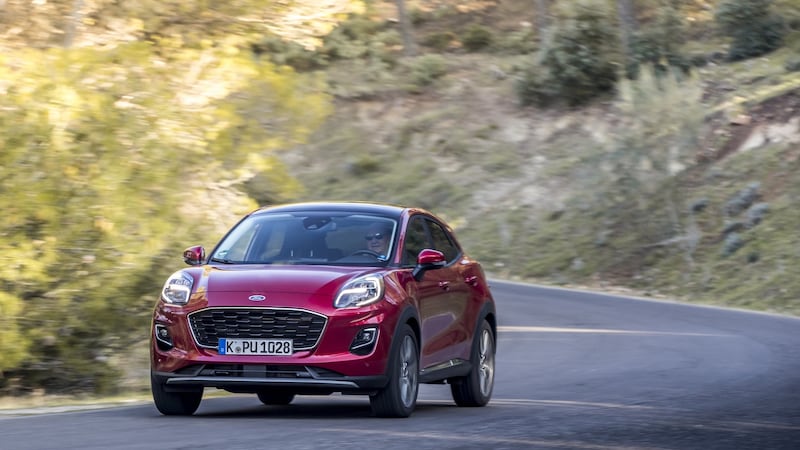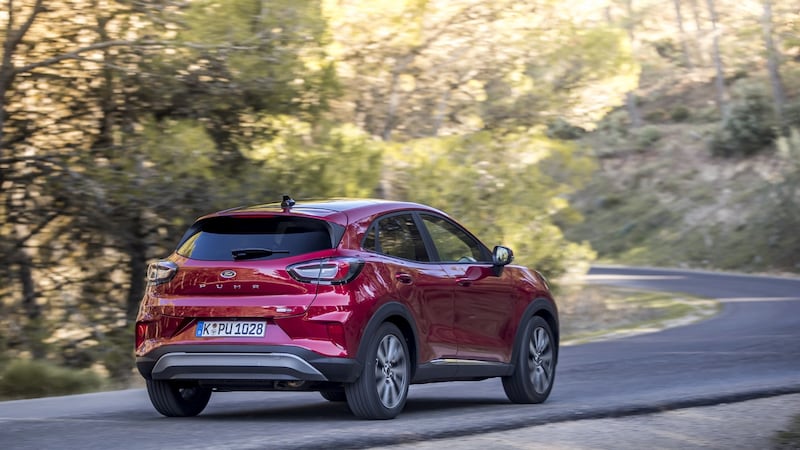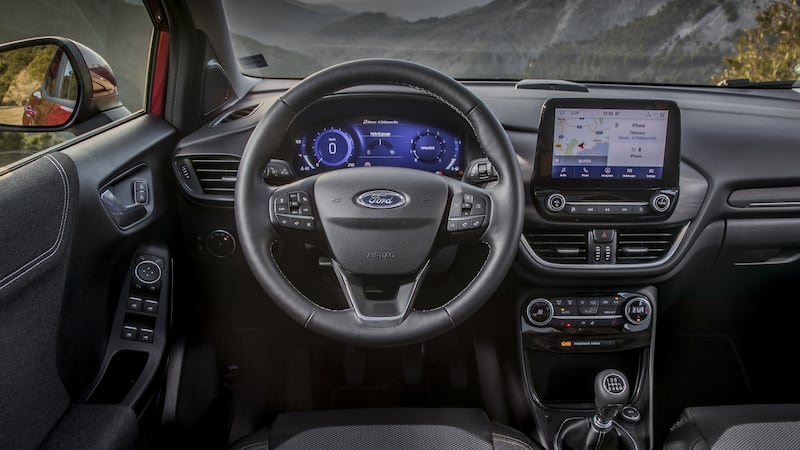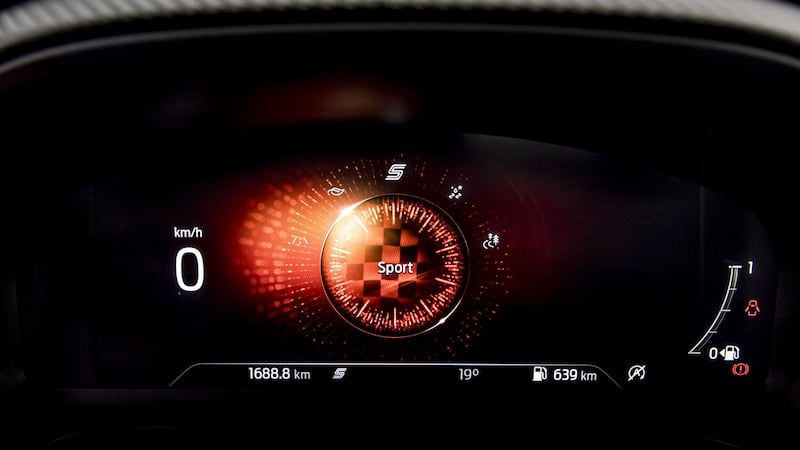Ford wasn't originally going to use the Puma name for its new compact crossover. According to the car's designer, Murat Gueler, who told The Irish Times: "We made some sketches and some early models and we showed them to potential customers. And people started to say that you should really call this car Puma, because the styling reminded them of the original. More and more people were saying this to us, and so the name stuck."
Thus was one of the great modern-day car-naming controversies (a category of controversy that dogs our every waking hour) born.
Should Ford have invoked wistful memories of the original 1997 Puma coupe, with its achingly cool Steve McQueen advert? Well, why the heck not? The original Puma, like this new one, was simply a fashionable derivative of the Fiesta. If Ford tried to make a new small Puma coupe now, no one (or at least an insufficient number of us) would buy one. People want SUVs instead, and so this new one grabs for itself a famous badge.
Fiesta-based it may be, but you'd be hard-pressed to spot the lineage when you first see the new Puma. It's 54mm taller than a Fiesta hatchback, but 71mm wider, and a whole 146mm longer, it appears far more sleek in the flesh than you expect. The lights are a bit goggle-eyed, but the way they sit atop the broad grille has a certain flavour of Aston Martin, if you're feeling generous (or maybe David Brown Speedback GT instead). The profile, which Gueler describes as "anti-wedge" (the primary lines fall back from the front wheelarch, rather than rising towards the rear) has hints of Jaguar I-Pace about it. It's kind of … cool? In a slightly anti-cool way, perhaps.


Oddly, Ford focused much of its attention on the rear of the car. Customers were sending signals that they weren’t prepared to accept less practicality, even if they did fancy some nice styling, so a little innovation was needed. That comes in the shape of the Transformers-esque “Megabox”. This is an 80-litre storage box – rubber-lined and with a drain plug at the bottom for hosing out – that acts as either an under-floor storage, or as a trap-door allowing you to carry bulky, upright items (golf clubs, tall house plants, furniture). The boot aperture is an unobstructed one-metre wide, and the total luggage capacity, including the Megabox, is 456 litres. That’s generous, even if you do have to sacrifice a spare wheel to get it (a tyre inflation kit, along with a first-aid box, lives under the passenger seat, and you can have a space-saver spare if you like, at the cost of half of the Megabox’s capacity).
Inside, there is the only real recognition point that the Puma shares a structure with the Fiesta, and that’s the dashboard. It uses the same basic shapes and components as the Fiesta, but perceived quality feels much better than that of the hatchback. Space is decent too, with plenty of room for those up front, and adequate space for back seaters. It’ll be safe too, with an optional (€1,500) driver assistance pack, and a new, standard, Local Hazard Information system which can, theoretically, receive wireless warnings from traffic up ahead of any dangers on the road.
The best bit of the cabin is probably the new digital instrument pack, a 12.3-inch TFT screen that comes as standard on ST-Line models, and which looks seriously classy and appealing. It changes its layout and colours depending on whether you’ve selected Normal, Eco, Sport or Slippery settings from the engine mode switch (also standard).
Performance
That engine is Ford's 1.0-litre EcoBoost turbo, and this time it's a hybrid. Well, a mild-hybrid. Ford Ireland will bring in only one engine option for now – the 125hp version, with 48-volt mild-hybrid assistance. It's one of 14 "electrified" models Ford plans to introduce this year, but unlike a Toyota hybrid, there's no electric-only running. Instead, a compact lithium-ion battery and an integrated starer/generator can add a little extra grunt to help the engine along (as much as 50Nm extra torque at low rpm), or it can take electrical strain away from the engine and run a more efficient stop-start system in traffic to help save fuel.
On the performance front, the result is profound. In spite of that "mere" 125hp, the Puma Ecoboost feels genuinely muscular under your right foot, and growls a happy little three-cylinder tune as it does so. Economy? We'll have to wait and see, but suffice to say that a long day chucking the Puma over the mountain road from Malaga to Ronda and back meant for economy that was more Boost than Eco. We'll try it under more calm circumstances at home.
The thing is though, you just don’t want to drive the Puma in a calm fashion. The trend amongst small crossovers such as this has generally been one of dynamic dreariness. Car makers know that buyers of such cars are drawn in by styling and fashionability, not dynamics. Kudos then, to Ford, for actually paying attention to the oily bits. The Fiesta is a good starting point, but the Puma surpasses its smaller brother. The extra length and weight mean the ride quality is exceptionally good, but that doesn’t mean that there’s lots of body roll nor any sloppiness. Quite the opposite – the Puma feels tight and taut, with steering that is a little springy at times in its self-centring but still accurate and full of feel and feedback.


It’s just fun. With that torquey engine singing along, the slick-shifting six-speed manual gearbox doing its thing, and the sharp steering guiding you in and through the bends, an almost-unique thing occurs – you’re having real fun in a small crossover. Bravo, Ford. Bravo.
Prices will start from €24,465 for a Titanium model, with ST-Line and ST-Line X sitting above. Ford also showed off a forthcoming ST-Line X Vignale model (if what you really want with your Puma is pricey leather seats) and another model that we’re not allowed to talk about. Being tactful, though, you can probably guess that it just might be a high-performance derivative. Silence though, for now.
That makes it a little pricey (a Renault Captur starts at €21,995, albeit is much less well-equipped as standard), and Ford will be keeping the dreary old EcoSport small crossover on sale for a year or so yet, as it reckons that car has a more rugged appeal which some buyers prefer.
Not me, though. Frankly, if you buy an EcoSport over this Puma, you’re nuts – slicker to look at than the photos suggest, practical, and, above all, fun. Ford may be going through some painful changes right now, but it thankfully hasn’t forgotten how to make a car that’s pure fun to drive.
Lowdown: Ford Puma 1.0 125hp Ecoboost Hybrid Titanium
Power: 1.0-litre mild-hybrid petrol with 125hp, 200Nm torque, six-speed manual, front-wheel drive.
Consumption: 5.8l/100km.
Emissions: 132g/km (27 mg/km NOx).
0-100km/h: 10.5 seconds.
Price: From €24,465 (€24,465 as tested).
Our rating: 4/5.
Verdict: A truly loveable small crossover. More fun than anything else in the class.









